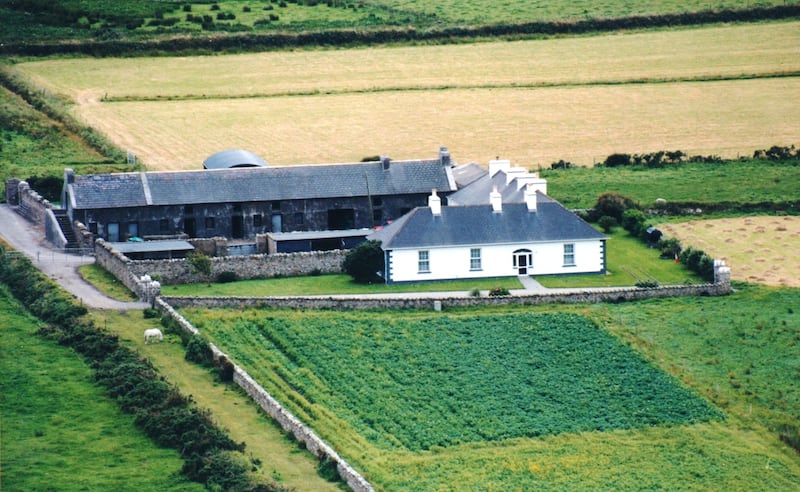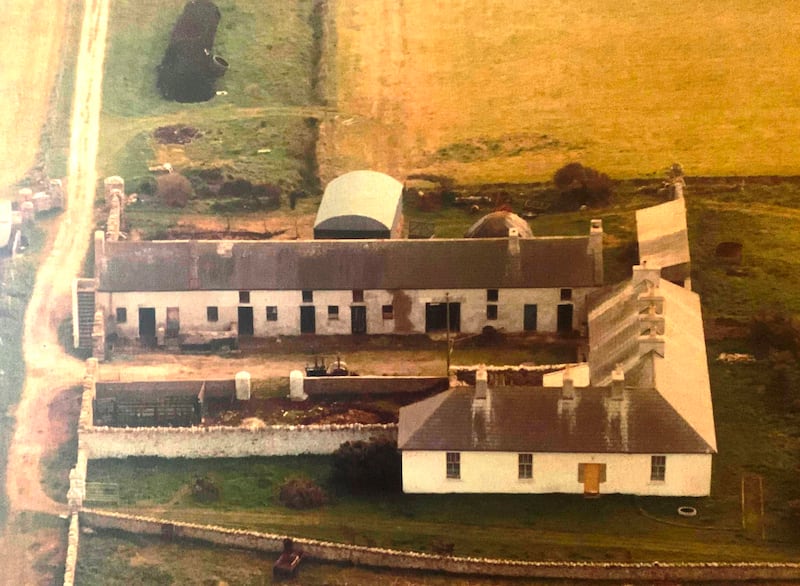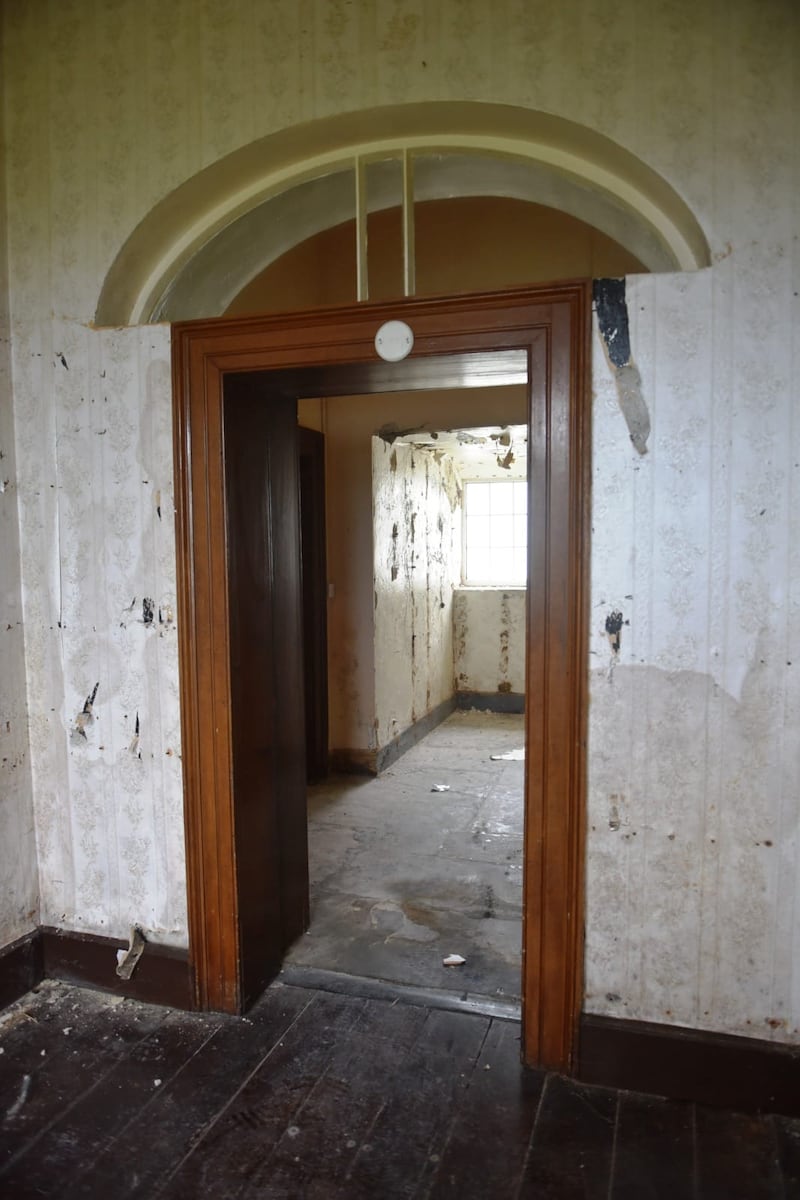It’s been a little like peeling an onion over the past couple of months; only when you take away what’s not original do you get a notion as to what has been hiding beneath years of additions and makeovers.
Take, for example, the exterior. Older pictures show the L-shaped one-storey house with a lovely, simple lime-render facade. At some point, presumably in the 1980s, the render was replaced with cement mortar (and coloured cornerstones for a bit of glam). As cement restricts movement of water, it has created and added to internal dampness.
I’d hoped the cement might hide that lovely pink granite from Blacksod, used on the lighthouse that winks across the sea at night, as the buildings appear to be of similar age.
Shielding Ireland’s only square castellated lighthouse – where weather observations in June 1944 caused the postponement of Normandy landings – the stone from Blacksod was so highly prized it was shipped off to London for use in the Houses of Parliament, as noted in the Building News in 1869. Altmore Quarry, from which it came, was owned by absentee landlord Rev Palmer.
READ MORE


But 20 minutes with a pneumatic Kango hammer put any notions of grandeur to bed: behind the cement were walls 2½ft deep of the best local rubble. Impenetrable rubble, mind you.
In Frank Keohane’s book Irish Period Houses: A Conservation Guidance Manual – my go-to source for best practice research – he says: “the use of lime as a building material is probably the primary reason why so many traditional Irish buildings have survived in a stable condition to the present day.” So all the cement mortar has to go, to be replaced with breathable lime render; a costly, arduous job as the building has so much surface area due to its L shape.
Another layer of the onion was what lay behind two fake ceilings and a partition wall in what was revealed to be the old kitchen. Besides the 70 hooks on 16ft-high ceilings are lovely keystones marking the surround of a large old hearth. I’ll restore this and insert a wood-burning stove to heat the kitchen and water.
Windows and fanlights
Windows are another bit of an enigma. If you look at the photograph with the old lime render (before the additions of the cornerstones) the windows appear to be three over two with vertical configuration. The only explanation seems to be two different types, with bases as replacements for storm damage.
Translating as “saltwater winds” (from the Irish Gaoth Saile; the name of the townland where the property lies) some of the lands here are almost salted from the Atlantic. It goes to explain why there isn’t a piece of glass not to mind a door on its southerly aspect – the direction of prevailing winds.
As you can see, the front door has been replaced with a plastic substitute with some sort of fake fanlight. Interestingly though, inside the front door off the central hallway lies an original internal fanlight.

Protected structures
On the advice of a conservation consultant, I have elected for the property to be entered on the Record of Protected Structures (“listed” is a term used in the UK).
From writing about houses over the years this can be perceived to be a double-edged sword. You’ll hear warnings against entering it on the record such as “you won’t be able to put a nail in a wall” or “you’ll need to ask the planners to paint the front door”.
However, this is misguided and often misunderstood. It’s best to work with and contact your local authority/conservation officer for advice. In my case, as my desire is to restore the house to its original condition, it’s in line with best practice. If it’s accepted, as the protection automatically extends to all parts of the property including within the curtilage of the structure, I can get advice and some financial assistance on the repair and maintenance of the buildings. Good news for old sheds and outbuildings whose roofs are unstable.
Grant
My application to the Vacant Property Refurbishment Grant is still in process. Mayo County Council came back seeking more information including queries on the old septic tank. Now that we found where it actually lies (it had raw sewage running in a sewer pipe over a stream), on the advice of an Environmental Protection Agency adviser, we’ve dug trial holes and will apply for permission for a new percolation unit closer to the house on a better gradient.
In other news, having completed an organic farming course and two trips to meet happy organic farmers, I can confirm I’m certified. Feeling like a total interloper, the thing that sticks in my head most, after the 50-hour course, is I’ll need something called a “derogation” from the Government if I ever want to castrate a bull.




















